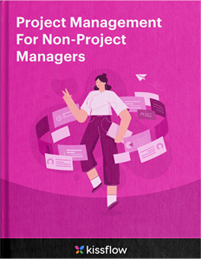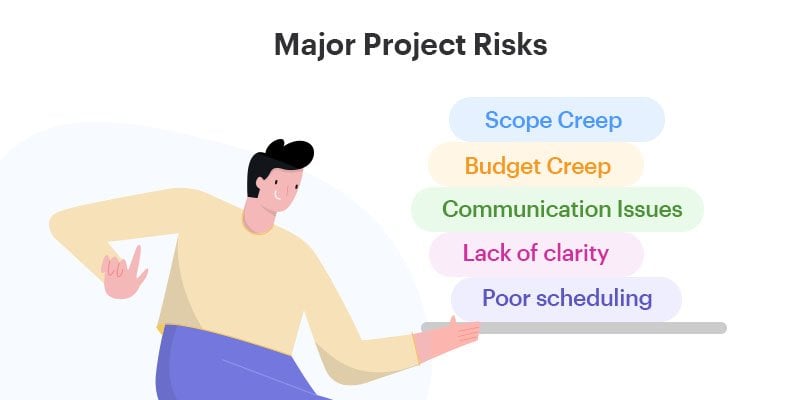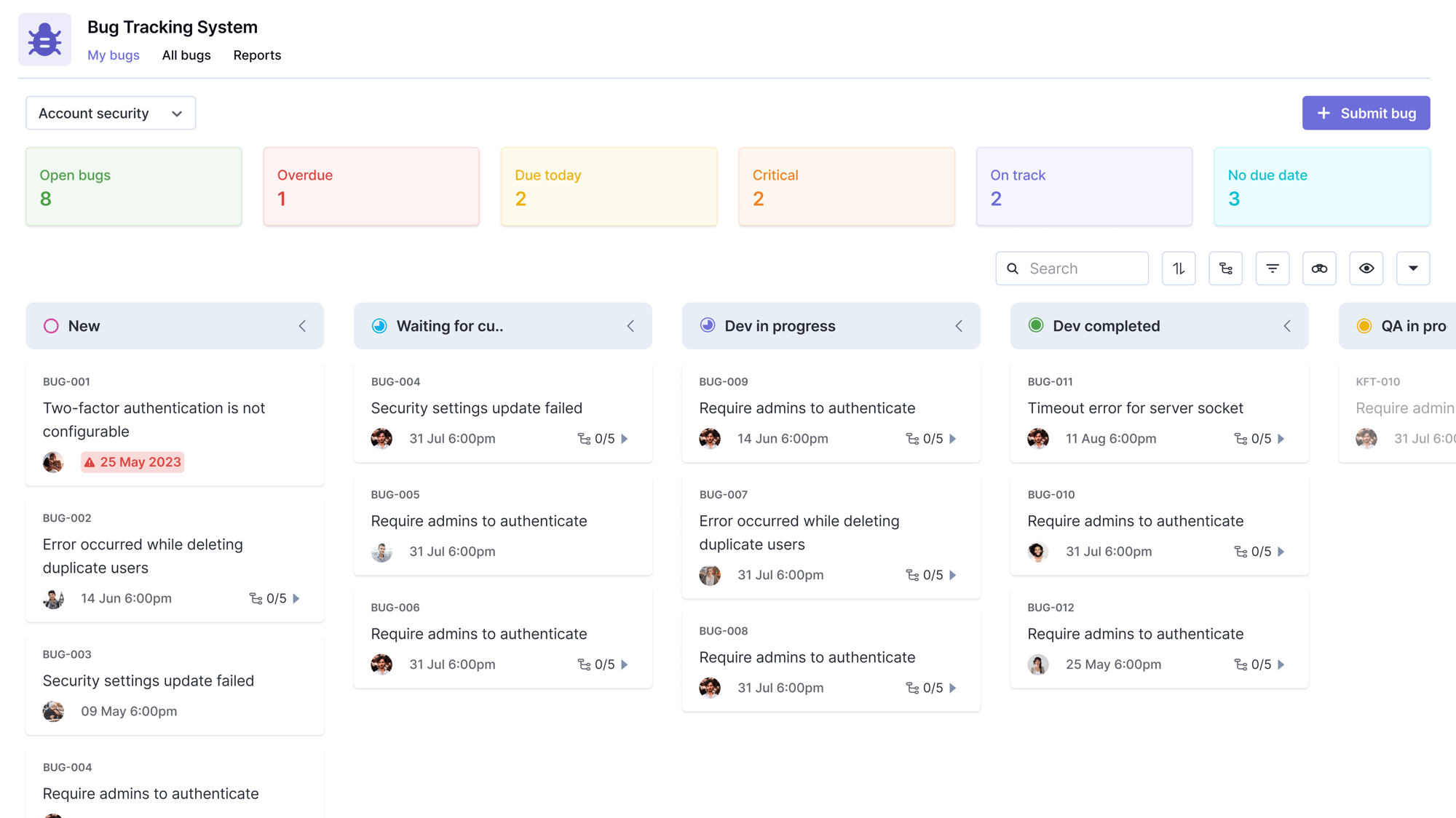Project risk management. Not a very exciting or pleasant topic, you might think. It would be nice if we could all go about our work without considering the bad things that might happen. However, as a Project Manager, it’s your job to think about the potential risks to your project.
The good news is that if you take a risk identification part of your project planning process, you’ll be prepared before a crisis presents itself, and then it’s not as much of a crisis.
What is project risk?
Project risk is a problem that may or may not arise over the course of your project management. There’s no way to control for all potential risks, but thinking through them ahead of time can save your project from failure. It may give a positive or negative effect on the project.
What is risk assessment in project management?
Risk assessment, or risk identification, is an acknowledgment that something could go wrong. In a risk assessment, you compile a list of risks and discuss how to mitigate them. Risk analysis is something several if not all, members of your project team should be part of. Hold a meeting and then separately ask for insight from all team members about the risks you should consider.

Want to learn project management but put off by jargon?
Learn what's important in the simplest ebook for non-project managers.
5 major project management risks and how to deal with it
You can’t eliminate all the risks from your project, but prioritizing tasks and getting your team prepared for the most likely obstacles can help you overcome problems more quickly and get back on track toward successful project completion. You need to have a proper risk mitigation plan so that the project won’t end up in failure.

Here are some common types of risks in project management and how to mitigate them:
1. Scope creep
Scope creep happens when either
- the parameters of the project were not well-defined from the outset or
- there’s pressure–either internally from the project team or externally from customers or bosses–to take on tasks that were not part of the original project plan.
Often scope creep is the result of great intentions. Your client has a brilliant new insight or a team member dreams up an impressive feature to incorporate or maybe someone in upper management wants to go the extra mile to impress the client. Tiny adjustments here and there can add up to hours (or days or weeks) of additional work.
The problem with scope creep is that it often contributes to project failure. You haven’t budgeted the time or resources necessary to complete the extra tasks, so what might have been a smashing success ends up a frustrating failure.
How to manage it:
To prevent scope creep, make sure that your client knows exactly what they need and has included all the details in a written request. Create a project charter document for your client describing what your team will deliver and when, and include a section that explains what will happen if the client adds to the agreed-upon parameters.
Depending on the request, it may be possible to accommodate a bit of scope creep, but be sure to explain to your client that such additions will result in changes to the cost and/or timeline of the project.
See how Kissflow delivers the fastest time-to-value in the market
2. Budget creep
Closely related to scope creep is a budget creep. Changes in project scope certainly can affect your bottom line adversely, but so can other factors. Overly optimistic cost estimates can result in a budget overrun, as when you underestimate the time or external resources required to complete the project.
Sometimes there are unforeseen changes in material or labor costs. Poor planning nearly always affects your budget, as can poor communication, and we’ll talk about those below.
How to manage it:
Some budget changes are beyond your control as the project manager, but not all. To mitigate against budget-related risks, do your research very carefully, and don’t present a finalized budget until your project plan and schedule are complete.
Creating transparency around your project can also prevent budget overruns; both the client and team members can help keep the project within the budget if they have access to relevant information.
3. Communication issues
Just as in life, communication is among the most important factors in successful project management, and having poor communication poses a huge and unnecessary risk. Choose good project collaboration tools and explain them to your team at the outset of your project.
Most teams utilize some combination of email, text messaging, a chat service, and/or Google integrated apps. As the project manager, you should ensure everyone on the team can use the technology you’ve selected. Beyond the method of communication, make sure to be clear with expectations about response times and set a good example of professional communication style and tone.
How to manage it:
To mitigate communication risks, you should simplify your project communication streams to the smallest number that will allow your team to remain effective. Research what communication and collaboration platforms will best serve the people and the project you’re managing. You may also need to coach some team members toward developing better communication skills.
4. Lack of clarity
Poor communication from clients and stakeholders can introduce another risk: that of unclear requirements. Just as you need to establish good communication with your team, you must also develop good communication with your client and other stakeholders so that project requirements are clear from the start.
Most people have had the unfortunate experience of investing significant time into a project only to find out they misunderstood what was being asked.
How to manage it:
Good listening skills go a long way toward mitigating this risk. As the project manager, it falls on you to get clarification from the client on what they need and to listen carefully to all the project stakeholders as they provide input. Ask as many questions as it takes to get a clear picture of the desired final product and its purposes.
Ask for hard data in the form of numbers, but also ask for stories about what success looks like for the end-user. A clear, shared vision can prevent problems and provide inspiration for the team.
5. Poor scheduling
Project scheduling is a major component of successful project management, and poor scheduling can introduce a multitude of risks to your project. Scheduling involves creating a document, these days usually a digital document, that details the project timeline and the organizational resources required to complete each task.
The project schedule must be accessible to every team member. Its purpose is to communicate critical information to the team, so it must be comprehensive and easy to understand. Project scheduling can be broken down into eight steps and even though it can be time-consuming, proper project scheduling software can help you avoid many of the risks that might otherwise arise in your project.
How to manage it:
Detailed planning is essential to creating a project schedule. If you plan well, there are many project roadmap tools that can prove helpful in staying on track. Depending on the scope and complexity of your project, you may find a simple shared calendar would be effective. For more complex projects, some teams use Gantt charts and others prefer kanban boards.
Schedule Your Personalized Free Demo for Kissflow Low-Code Platform
Getting big and small pictures
Much of risk management is about paying attention to details. As the project manager, you have to keep the big picture in mind while also attending (or ensuring someone else is attending) to the details.
Your search for Project Management has landed you here. Wondering why?
As a user, you'll experience the full value of Kissflow by implementing it across departments for diverse use cases rather than just addressing isolated needs like a project management tool for a single team or department.
Application Development Platform
Digital Transformation Platform
Find out more about the benefits of the Kissflow Low-Code Development platform.

%20(2).png?width=2000&name=PSE%20Dashboard%20(3)%20(2).png)
.png?width=2000&name=Dashboard%20(5).png)





